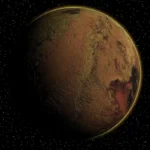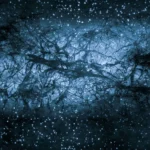
A lunar eclipse happens when the Moon passes through the Earth’s shadow. During this type of eclipse, the Moon appears reddish. This type of eclipse can only happen when the moon is full. An eclipse was terrifying in ancient times because people used the Moon and Sun to tell time and seasons. People were unsure what to expect when the Moon appeared, causing a dramatic shift. Total lunar eclipses, partial lunar eclipses, and penumbral eclipses are the three types of lunar eclipses, with total lunar eclipses being the most dramatic, with Earth’s shadow completely covering the moon.
Some lunar eclipses can last up to three and a half hours and 45 minutes.
Normally, eclipses alternate between solar and lunar phases.
A lunar eclipse usually occurs three times a year at the most.
Every year, there are more solar eclipses than lunar eclipses.
A lunar eclipse is classified into three types: partial, full, and prenumbral.
Only a portion of the Moon passes through the Earth’s shadow during a partial lunar eclipse.
When the Earth passes directly in front of a full moon, it causes a total lunar eclipse.
A prenumbral lunar eclipse occurs when the Moon passes through the Earth’s prenumbral shadow.
The Moon’s appearance or darkness varies during a total lunar eclipse due to variations in the composition of the Earth’s atmosphere.
The Danjon Scale is a measurement of the darkness of a total lunar eclipse.
The Danjon Scale has 5 points that range from 0 (Moon appears almost invisible) to 4 (Moon appears almost invisible) (very bright yellowish orange).
Looking directly at the Moon during a lunar eclipse is not dangerous because the Moon does not emit its own light.
In ancient times, a total lunar eclipse or Moon disappearance meant that the gods were furious with the people.
The term eclipse is derived from the Greek word for “fall.”
A lunar eclipse can be seen by more people than a solar eclipse.









